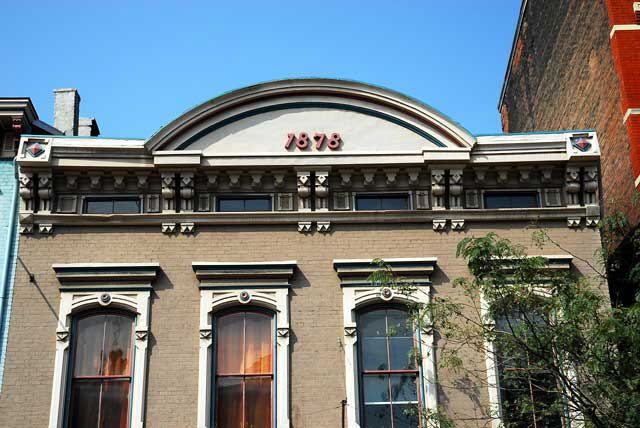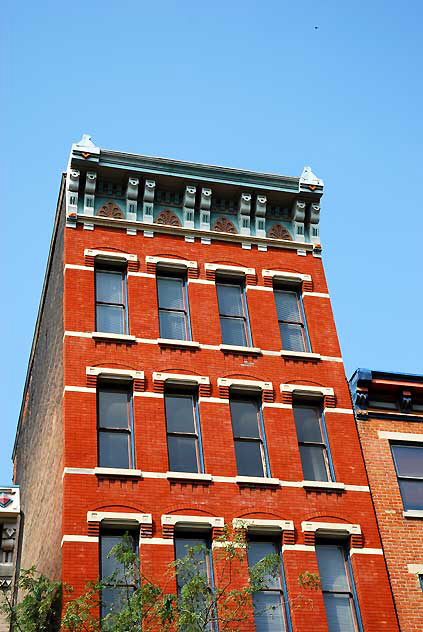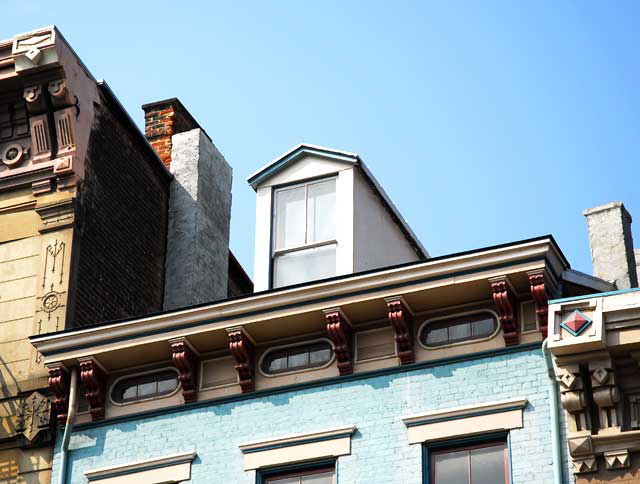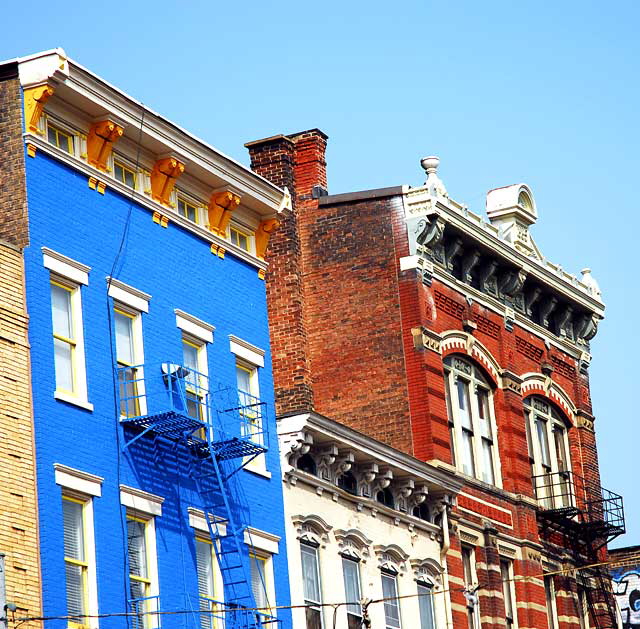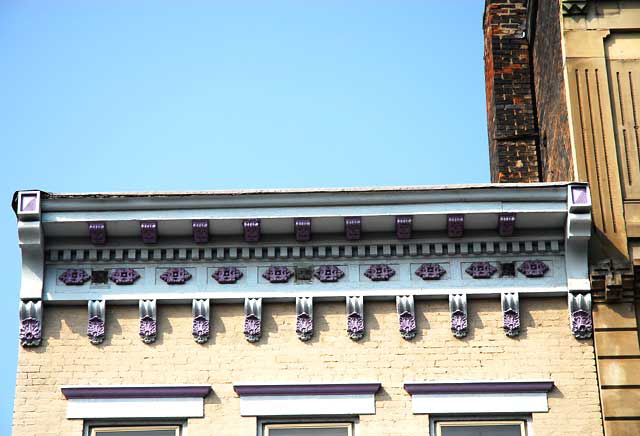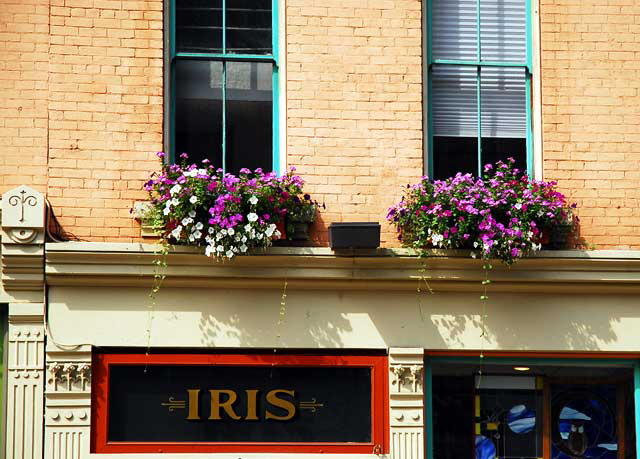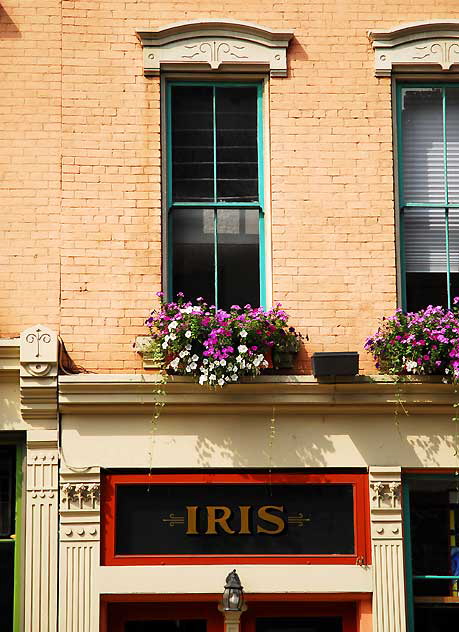|
Over-the-Rhine is a neighborhood in Cincinnati, just north of Downtown, and now a historic district, with its massive collection of nineteenth-century Italianate structures. In fact, it was listed in the National Register in 1983, with 943 contributing buildings.
The name comes from the neighborhood's builders and early residents, German immigrants. They called their neighborhood "Over-the-Rhine" – pretending the canal they had to cross to get to work downtown was the Rhine in Germany. And a lot of German was spoken here. You find German inscriptions here and there – and once there were more than fifty breweries in the neighborhood alone. Prohibition ended that. But the local Saint Mary's Catholic Church, the oldest standing church building in Cincinnati, still holds Mass in German and Latin every Sunday. The Cincinnati Volksfreund, the daily and weekly German-language newspaper based in Cincinnati, published between 1850 and 1908, was read here. But the canal is long gone – now an abandoned subway. The Rhine is gone.
Now the place doesn't have much of an identity. It's not German, or anything – the Germans got rich and moved out, and now it's just halfway between low-income black and attempts at hip gentrification. But the open air drug trade that had plagued the neighborhood for years has been reduced with that "vortex unit" of the Cincinnati Police. Of course there were the three days of race riots here in 2001. The place is still tense, but getting better.
And they're almost finished building the School for Creative and Performing Arts here, which will be the only K-12 arts school in the United States, and artists are moving into the area. And everyone drops by the Findlay Market – all the food stalls and fresh produce from the countryside.
But it's the architecture the catches your eye.
|
